Book Cover
Contents
Preface
Part I: Objects & C++
Chapter 1: Arrays, Pointers & Structures
1.1 What are Pointers, Arrays & Structures?
1.2 Arrays & Strings
1.2.1 First-Class Versus Second-Class Objects
1.2.2 Using the vector
1.2.3 Resizing a vector
1.2.4 push_back, size & capacity
1.2.5 Parameter-Passing Mechanisms
1.2.6 Primitive Arrays of Constants
1.2.7 Multidimensional Arrays
1.2.8 The Standard Library string Type
1.3 Pointer Syntax in C++
1.4 Dynamic Memory Management
1.4.1 The new Operator
1.4.2 Garbage Collection & delete
1.4.3 Stale Pointers, Double Deletion, and More
1.5 Reference Variables
1.6 Structures
1.6.1 Pointers to Structures
1.6.2 Exogenous Versus Indigenous Data and Shallow Versus Deep Copying
1.6.3 Noncontigious Lists: Linked Lists
Summary, Exercises etc
Objects of the Game
Common Errors
On the Internet
Exercises
References
Chapter 2: Objects & Classes
2.1 What is Object Oriented Programming?
2.2 Basic class Syntax
2.2.1 Class Members
2.2.2 Extra Constructor Syntax and Accessors
2.2.3 Separation of Interface and Implementation
2.2.4 The Big Three: Destructor, Copy Constructor, andoperator=
2.2.5 Default Constructor
2.3 Additional C++ Class Features
2.3.1 Initialization Versus Assignment in the ConstructorRevisited
2.3.2 Type Conversions
2.3.3 Operator Overloading
2.3.4 Input and Output and Friends
2.4 Some Common Idioms
2.4.1 Avoiding Friends
2.4.2 Static Class Members
2.4.3 The enum Trick for Integer Class Constants
2.5 Exceptions
2.6 A string Class
2.7 Recap: What Gets Called and What Are the Defaults?
2.8 Composotion
Summary
Objects of the Game
Common Errors
On the Internet
Exercises
References
Chapter 3: Templates
3.1 What Is a Template?
3.2 Function Templates
3.3 A Sorting Function Template
3.4 Class Templates
3.4.1 A MemoryCell Template
3.4.2 Implementing the vector Class Template
3.5 Templates of Templates: A matrix Class
3.5.1 The Data Members, Constructor. and Basic Accessors
3.5.2 operator [ ]
3.5.3 Destructor, Copy Assignment, and Copy Constructor
3.6 Fancy Templates
3.6.1 Multiple Template Parameters
3.6.2 Default Template Parameters
3.6.3 The Reserved Word typename
3.7 Bugs Associated with Templates
3.7.1 Bad Error Messages and Inconsistent Rules
3.7.2 Template-Matching Algorithms
3.7.3 Nested Classes in a Template
3.7.4 Static Members in Class Templates
Summary
Objects of the Game
Common Errors
On the Internet
Exercises
Chapter 4: Inheritance
Chapter 5: Design Patterns
Part II: Algorithms & Building Blocks
Chapter 6: Algorithm Analysis
Chapter 7: The Standard Template Library
Chapter 8: Recursion
Chapter 9: Sorting Algorithms
Chapter 10: Randomization
Part III: Applications
Chapter 11: Fun & Games
Chapter 12: Stacks & Compilers
Chapter 13: Utilities
Chapter 14: Simulation
Chapter 15: Graphs & Paths
Part IV: Implementations
Chapter 16: Stacks & Queues
Chapter 17: Linked Lists
Chapter 18: Trees
Chapter 19: Binary Search Trees
Chapter 20: Hash Tables
Chapter 21: A Priority Queue: The Binary Heap
Part V: Advanced Data Structures
Chapter 22: Splay Trees
Chapter 23: Merging Priority Queues
Chapter 24: The Disjoint Set Class
Appendices
Appendix A: Miscellaneous C++ Details
Appendix B: Operators
Appendix C: Some Library Routines
Appendix D: Primitive Arrays in C++
Index
Back Cover



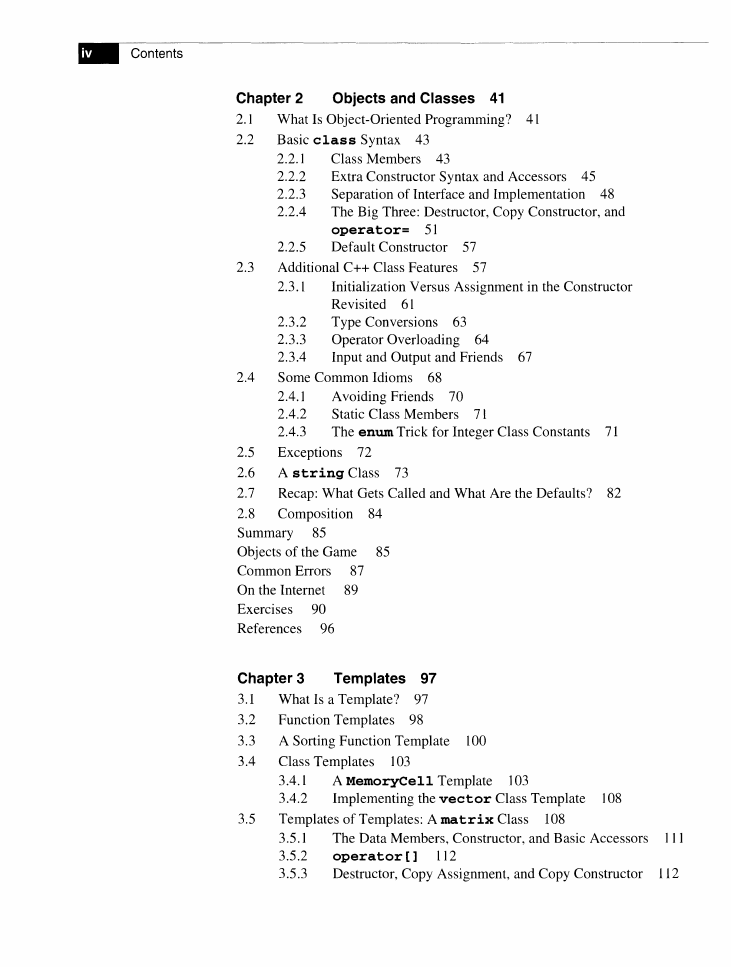
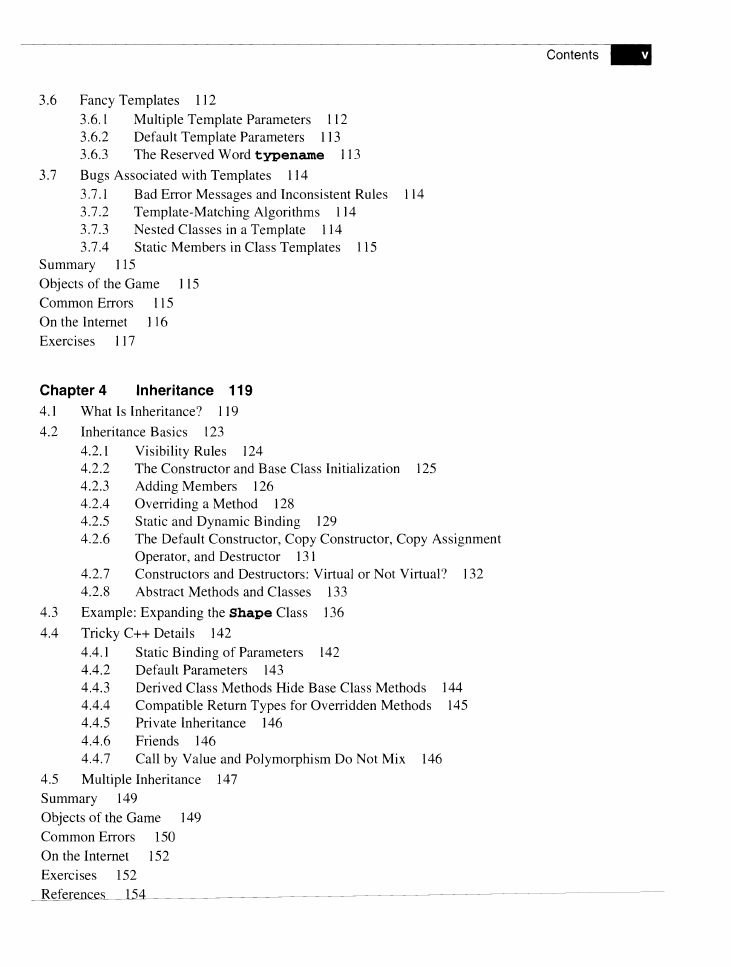
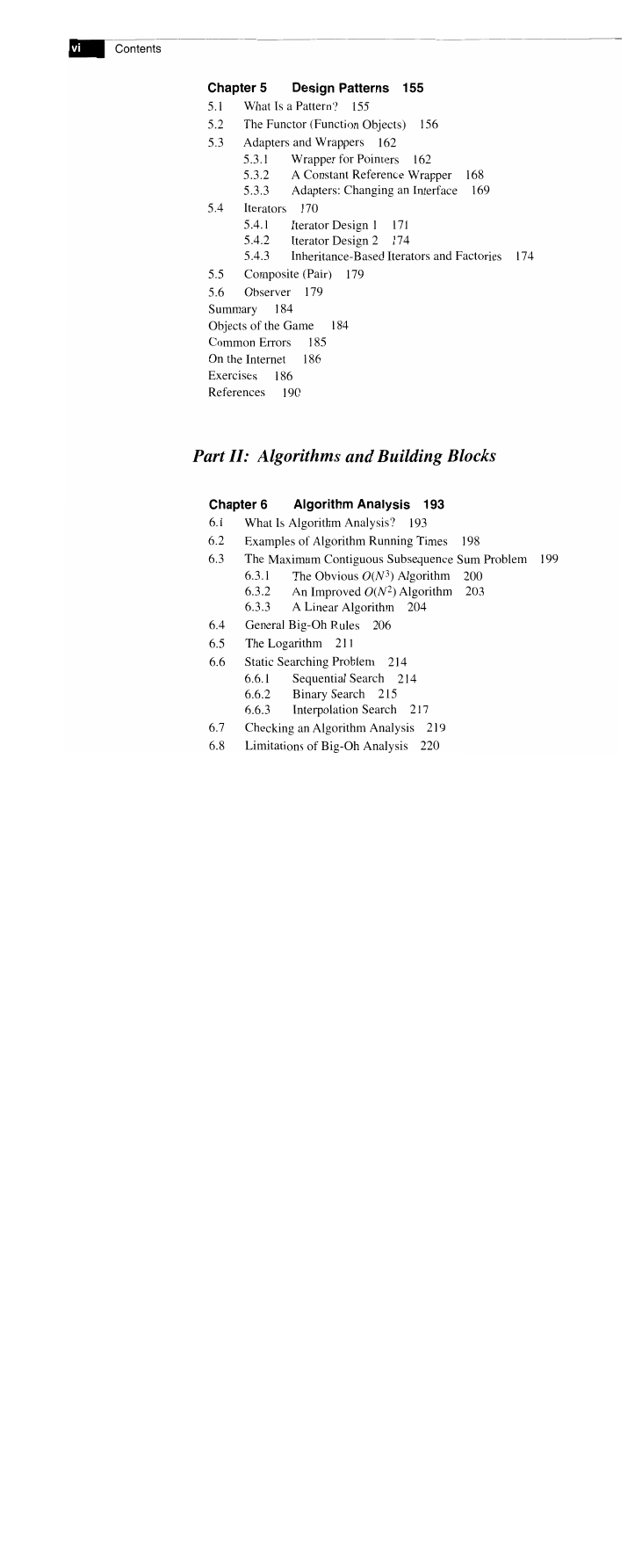
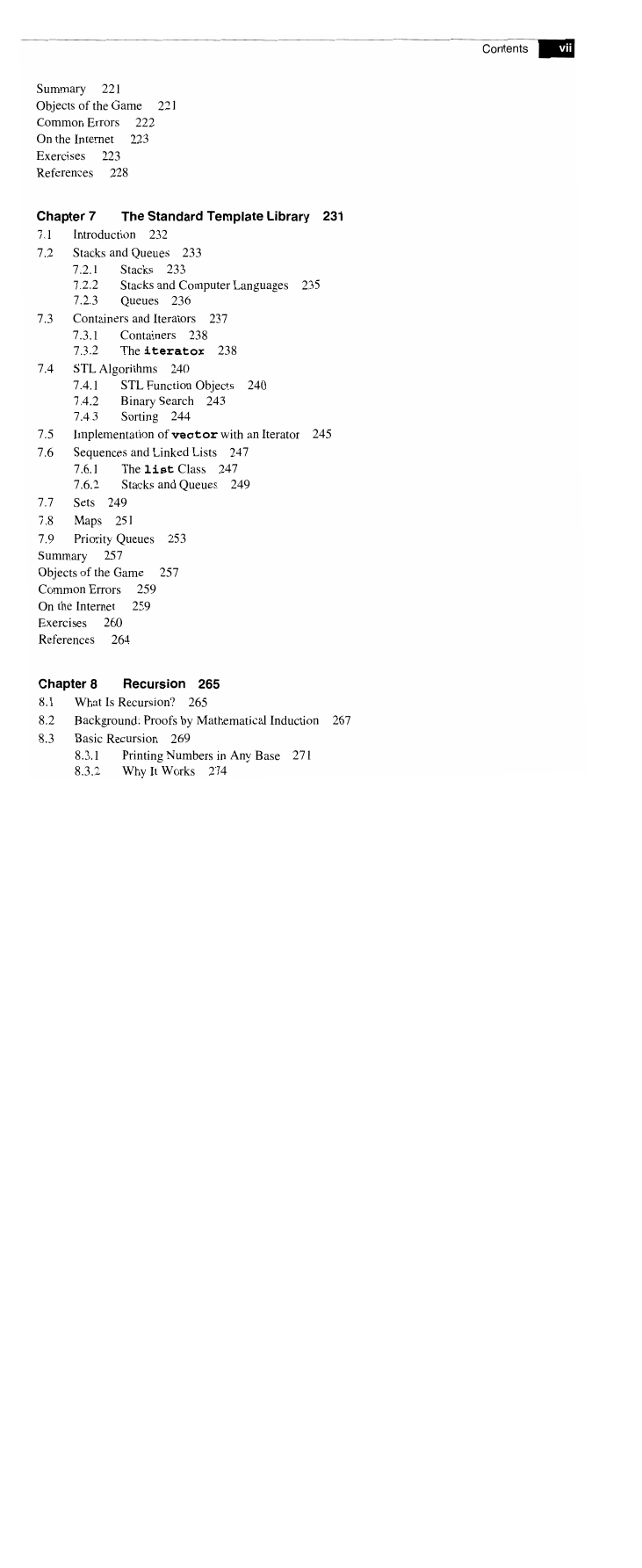
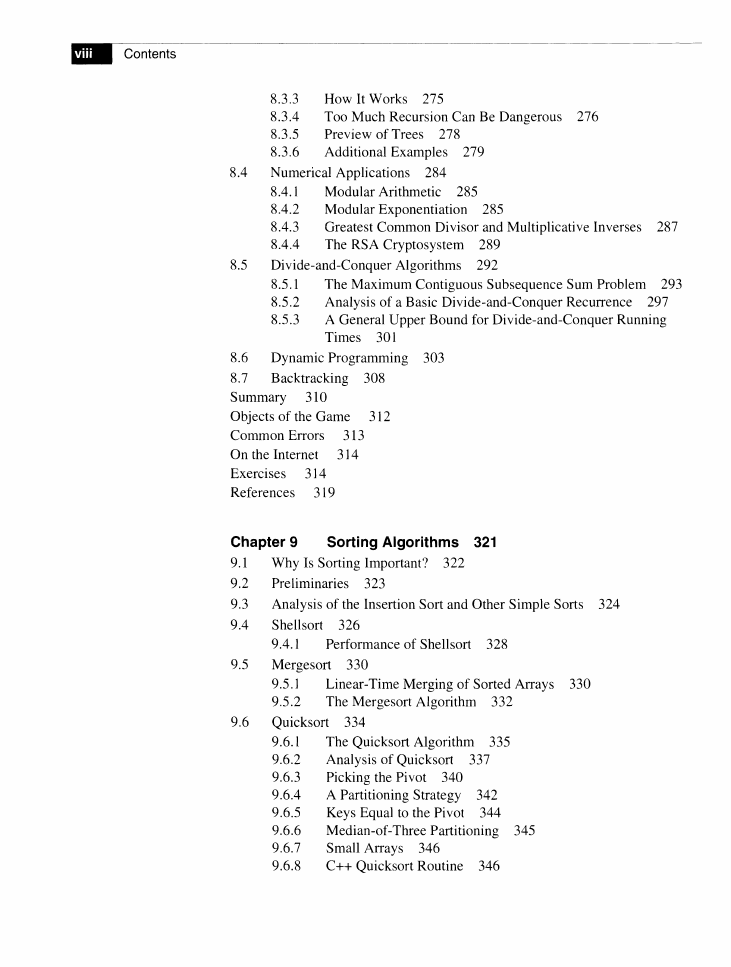








 2023年江西萍乡中考道德与法治真题及答案.doc
2023年江西萍乡中考道德与法治真题及答案.doc 2012年重庆南川中考生物真题及答案.doc
2012年重庆南川中考生物真题及答案.doc 2013年江西师范大学地理学综合及文艺理论基础考研真题.doc
2013年江西师范大学地理学综合及文艺理论基础考研真题.doc 2020年四川甘孜小升初语文真题及答案I卷.doc
2020年四川甘孜小升初语文真题及答案I卷.doc 2020年注册岩土工程师专业基础考试真题及答案.doc
2020年注册岩土工程师专业基础考试真题及答案.doc 2023-2024学年福建省厦门市九年级上学期数学月考试题及答案.doc
2023-2024学年福建省厦门市九年级上学期数学月考试题及答案.doc 2021-2022学年辽宁省沈阳市大东区九年级上学期语文期末试题及答案.doc
2021-2022学年辽宁省沈阳市大东区九年级上学期语文期末试题及答案.doc 2022-2023学年北京东城区初三第一学期物理期末试卷及答案.doc
2022-2023学年北京东城区初三第一学期物理期末试卷及答案.doc 2018上半年江西教师资格初中地理学科知识与教学能力真题及答案.doc
2018上半年江西教师资格初中地理学科知识与教学能力真题及答案.doc 2012年河北国家公务员申论考试真题及答案-省级.doc
2012年河北国家公务员申论考试真题及答案-省级.doc 2020-2021学年江苏省扬州市江都区邵樊片九年级上学期数学第一次质量检测试题及答案.doc
2020-2021学年江苏省扬州市江都区邵樊片九年级上学期数学第一次质量检测试题及答案.doc 2022下半年黑龙江教师资格证中学综合素质真题及答案.doc
2022下半年黑龙江教师资格证中学综合素质真题及答案.doc